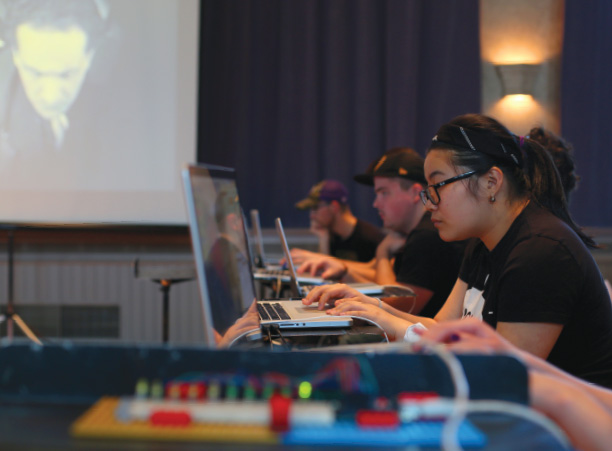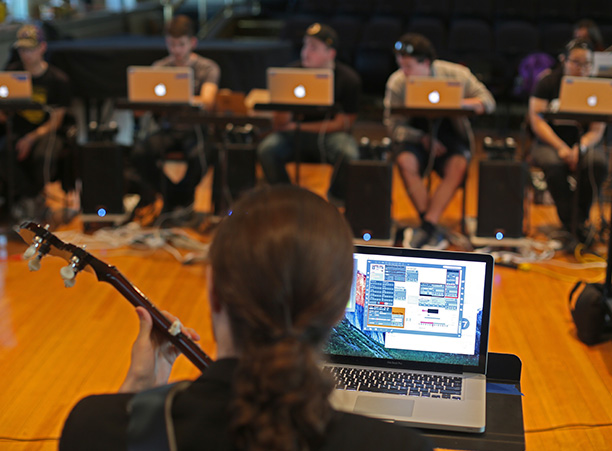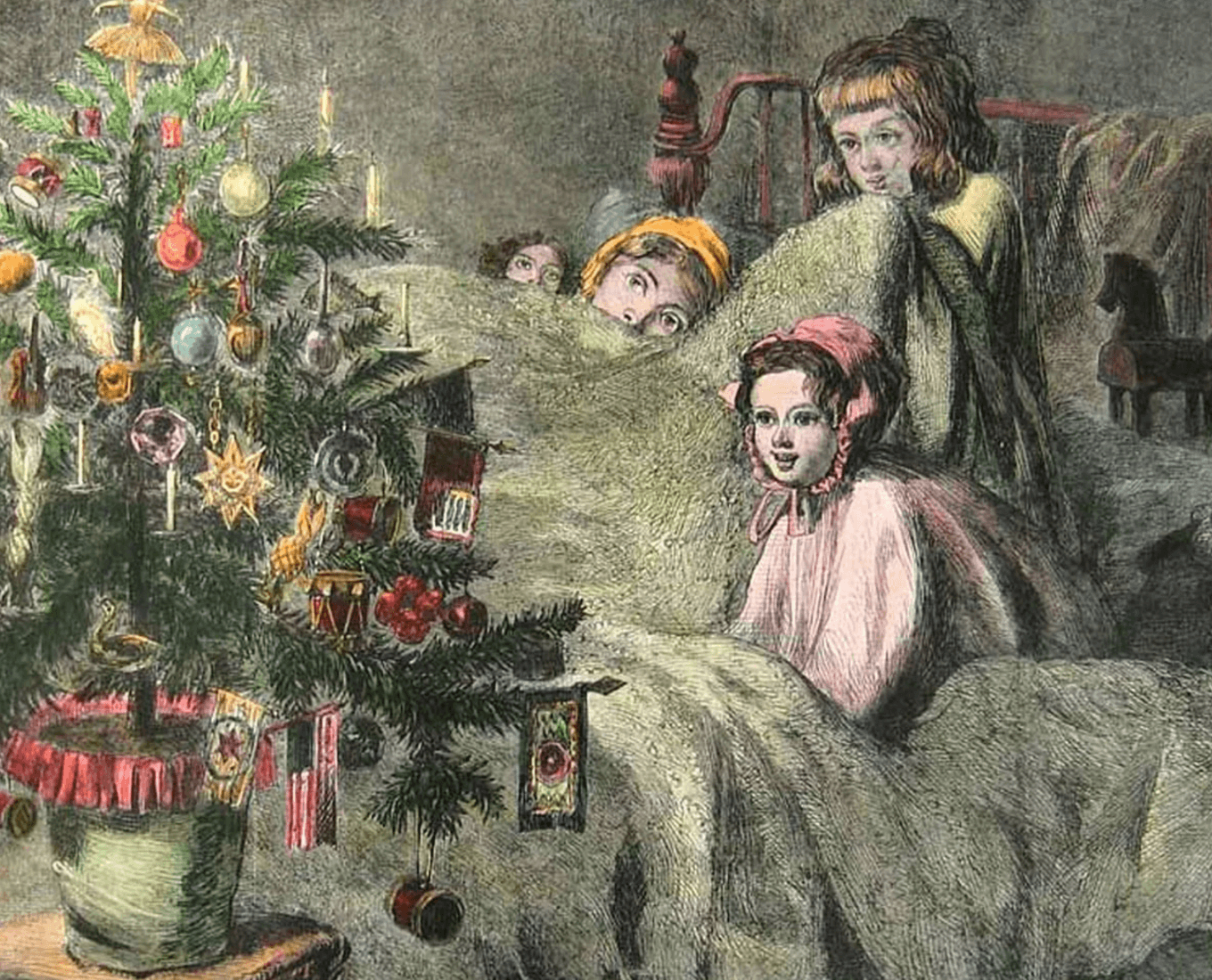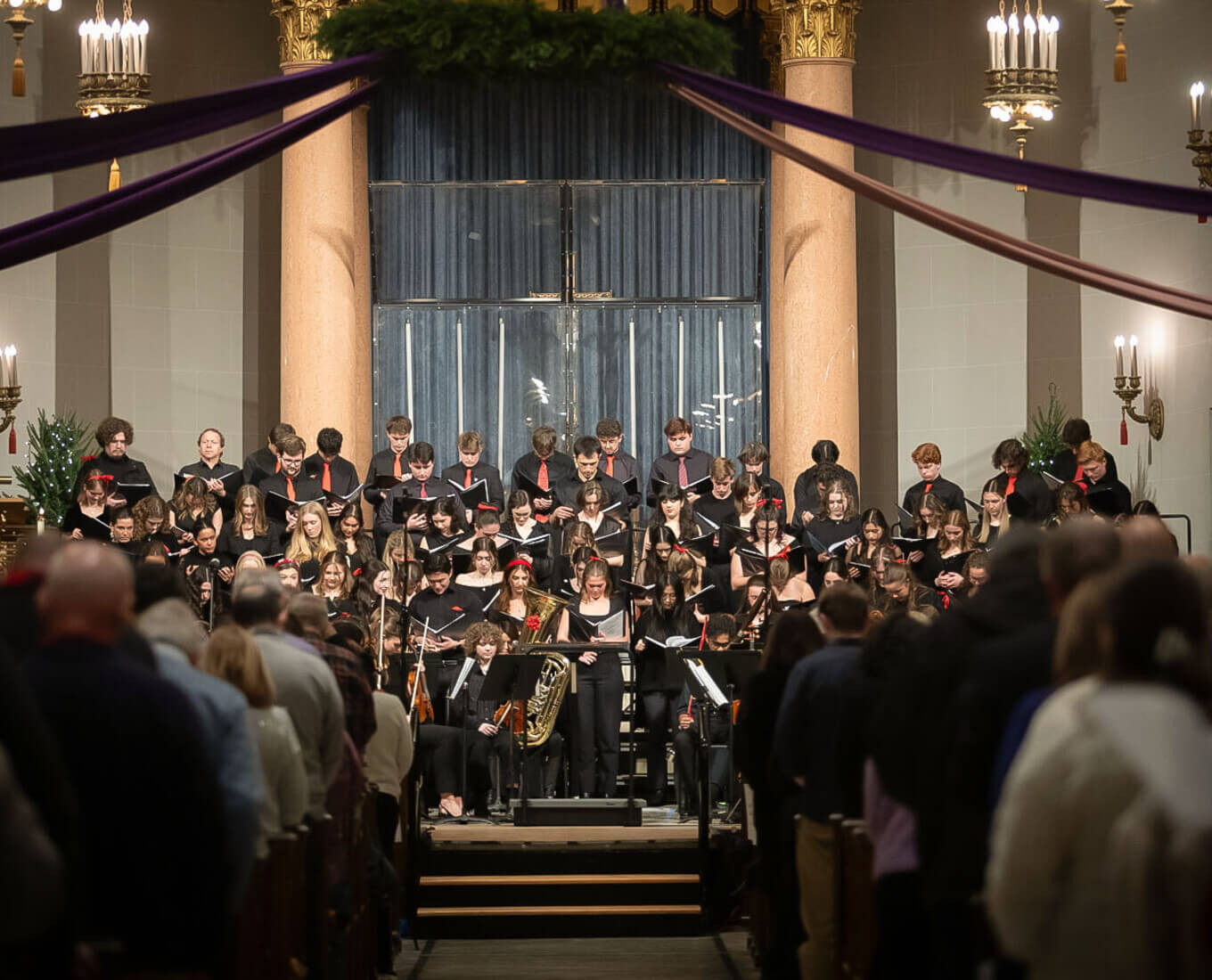Brooks Concert Hall, Marena Ella Minelli ’17 lifted a violin to her chin and began to play, releasing beautiful streams of music with her bow.
Moments later, she placed the string instrument on a chair, picked up a video game controller and toggled the joystick producing an entirely different, but equally riveting, sound.
Minelli is a member of the Holy Cross Laptop Ensemble Federation, or H-CLEF, an unusual chamber group that juxtaposes everything classical and computerized. Laptops are propped on stands in place of sheet music. Hacked game controllers, like the one Minelli used, sit on amps. And electronic, other-worldly sounds float by stained-glass windows and echo through the high ceilings of the concert hall.
What exactly is going on?
Electronic Music and Sound Design
“Students are studying electronic music and sound design in an experiential environment,” says Chris Arrell, associate professor of music and associate chair of the music department. He started H-CLEF two years ago as the performance part of a coding music class. “They learn the science behind digital synthesis, or sound creation, and they code their own electronic synthesizers. They build the software, then they build the hardware to trigger the sound.”

That’s where the keyboards, cell phones and game controllers come in. Students “play” the sounds they have engineered in real time by tapping keys, pushing joysticks and otherwise instructing their devices when and how to emit sound. Together, they compose musical scores and perform, as Arrell suggests, a “natural extension of chamber music.”
“They’re not simply cuing up a track and hitting play,” he says. “Just like plucking a guitar string, these sounds are synthesized by human touch. They have to listen to each other while they’re playing, and they work together to write compositions. It’s kind of like a co-authored paper.”
Complementing — Not Replicating — Traditional Instruments
And while Arrell’s ensemble includes some classical instruments like the violin, an electric guitar and a banjo, the goal is not to replicate those sounds with electronic devices.
“A synthetic violin will never sound as good a real violin,” he says. “I don’t want to imitate acoustic instruments, because they already do what they do really well. My intent is to expand on the colors and the possibilities.”

That’s exactly what drew the attention of Ben MacDougald ’19, a history major.
“Using the Macs, you can go beyond what a single instrument is capable of,” he says.
It’s also a way to enjoy the fun of making music without spending years learning how to play a classical instrument,” adds Bill Hamilton ’17, a biology major. While students without a music background still have to learn the fundamentals, there is an element of “instant gratification,” he says.
“I took the class because I’m thinking of double majoring in computer science and music,” says Zhiran Xu ’19. “It’s a combination I didn’t expect.”
This past spring, students wrote and performed the musical score for a 1920 German silent horror movie, called “The Cabinet of Dr. Caligari,” a chilling story of an insane hypnotist.
“This (the film score) is a great representation of how computers are recognized as legitimate sources of music,” says James Tatar III ’17, a political science major. “It’s just another step of what’s possible in the evolution of music.”
Written by Rebecca Fater for the Summer 2017 issue of Holy Cross Magazine.
About Holy Cross Magazine
Holy Cross Magazine (HCM) is the quarterly alumni publication of the College of the Holy Cross. The award-winning publication is mailed to alumni and friends of the College and includes intriguing profiles, make-you-think features, alumni news, exclusive photos and more. Visit magazine.holycross.edu/about to contact HCM, submit alumni class notes, milestones, or letters to the editor.


